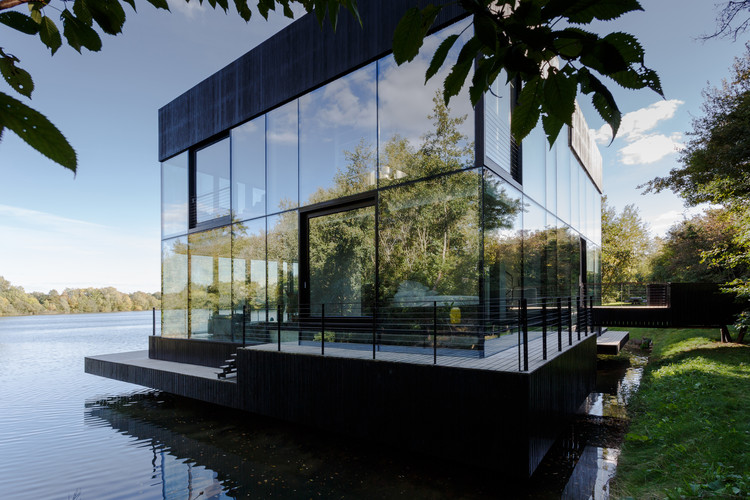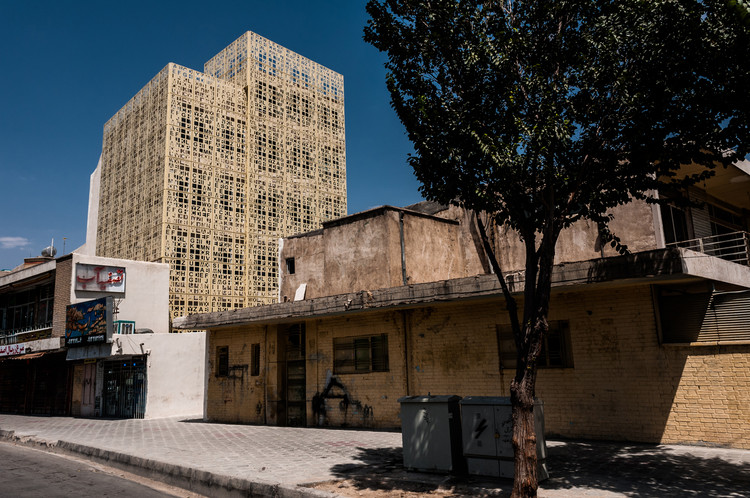AD Classics Kanchanjunga Apartments Charles Correa
2011-08-12 00:00
架构师提供的文本描述。通过为不同的地点和项目开发气候解决方案,印度建筑师查尔斯·科雷亚设计了坎坎农加公寓。这32套豪华公寓位于美国孟买,在人口和多样性方面相当于纽约市,位于市中心西南面的高档郊区,体现了社区上层社会的特点。
Text description provided by the architects. By developing climatic solutions for different sites and programs, Indian architect Charles Correa designed the Kanchanjunga Apartments. Located in Mumbai, the U.S. equivalent of New York City in terms of population and diversity, the 32 luxury apartments are located south-west of downtown in an upscale suburban setting embodying the characteristics of the upper echelon of society within the community.
Courtesy of Charles Correa
坎坎南加公寓是对当前文化、不断升级的城市化和该地区气候条件的直接反应。他们以多种方式向曾经站在遗址上的乡土建筑致敬。更多关于坎坎农加公寓休息后。
The Kanchanjunga Apartments are a direct response to the present culture, the escalating urbanization, and the climatic conditions for the region. They pay homage to the vernacular architecture that once stood on the site before the development in a number of ways. More on Kanchanjunga Apartments after the break.
Courtesy of Charles Correa
在孟买,一座建筑必须面向东西,以捕捉盛行的海风,并开放城市的最佳景观。不幸的是,这也是炎热的太阳和大雨的方向。旧平房解决了这些问题,在主要生活区周围包裹了一层阳台,从而为居住者提供了两条防线来抵御这些因素。
In Mumbai, a building has to be oriented east-west to catch prevailing sea breezes and to open up the best views of the city. Unfortunately, these are also the directions of the hot sun and the heavy monsoon rains. The old bungalows solved these problems by wrapping a protective layer of verandas around the main living areas, thus providing the occupants with two lines of defense against the elements.
Courtesy of Charles Correa
科雷亚把他巧妙的细胞规划能力推到了极限,从四套不同的公寓类型的联锁中可以看出,每个房间有3到6间卧室。在这项工作中,较小的水平位移是至关重要的,因为它们区分了外部充满泥土的梯田和内部升高的生活体积。这些微妙的变化使科雷亚能够有效地保护这些高耸单位免受太阳和季风降雨的影响。这在很大程度上是通过向塔楼提供悬浮在空中的较深的花园阳台来实现的。
Correa pushed his capacity for ingenious cellular planning to the limit, as is evident from the interlock of four different apartment typologies varying from 3 to 6 bedrooms each. Smaller displacements of level were critical in this work in that they differentiated between the external earth filled terraces and the internal elevated living volumes. These subtle shifts enable Correa to effectively shield these high rise units from the effects of both the sun and monsoon rains. This was largely achieved by providing the tower with relatively deep, garden verandas, suspended in the air.
Courtesy of Charles Correa
显然,这种安排在1952年在马赛建造的勒·柯布西耶(Le Cor布西耶)的“联合居住”(Unite d‘人居)的交叉单元中有其先例,尽管在孟买,这一分段规定并没有达到区分上下两种单元的极端程度。
Clearly, such an arrangement had its precedent in the cross-over units of Le Corbusier's Unite d' Habitation built in Marseilles in 1952, although here in Mumbai the sectional provision was achieved without resorting to the extreme of differentiating between up-and-down going units.
该建筑为32层钢筋混凝土结构,有6.3m悬臂式露台。中心核心由电梯组成,是抵抗侧向荷载的主要结构单元。采用滑移施工法,在主体结构施工前先施工中心核。这种技术在印度首次用于多层建筑。
The building is a 32 story reinforced concrete structure with 6.3m cantilevered open terraces. The central core is composed of lifts and provides the main structural element for resisting lateral loads. The central core was constructed ahead of the main structure by slip method of construction. This technique was used for the first time in India for a multistory building.
混凝土结构和大面积的白色面板与西方现代公寓楼有很大的相似之处,也许是因为科雷亚的西方教育。然而,坎坎纳公寓楼的花园梯田实际上是对传统印度平房的一种现代诠释:阳台。
The concrete construction and large areas of white panels bears a strong resemblance to modern apartment buildings in the West, perhaps due to Correa's western education. However, the garden terraces of the Kanchanjunga Apartments are actually a modern interpretation of a feature of the traditional Indian bungalow: the veranda.
Courtesy of Charles Correa
 举报
举报
别默默的看了,快登录帮我评论一下吧!:)
注册
登录
更多评论
相关文章
-

描边风设计中,最容易犯的8种问题分析
2018年走过了四分之一,LOGO设计趋势也清晰了LOGO设计
-

描边风设计中,最容易犯的8种问题分析
2018年走过了四分之一,LOGO设计趋势也清晰了LOGO设计
-

描边风设计中,最容易犯的8种问题分析
2018年走过了四分之一,LOGO设计趋势也清晰了LOGO设计














































